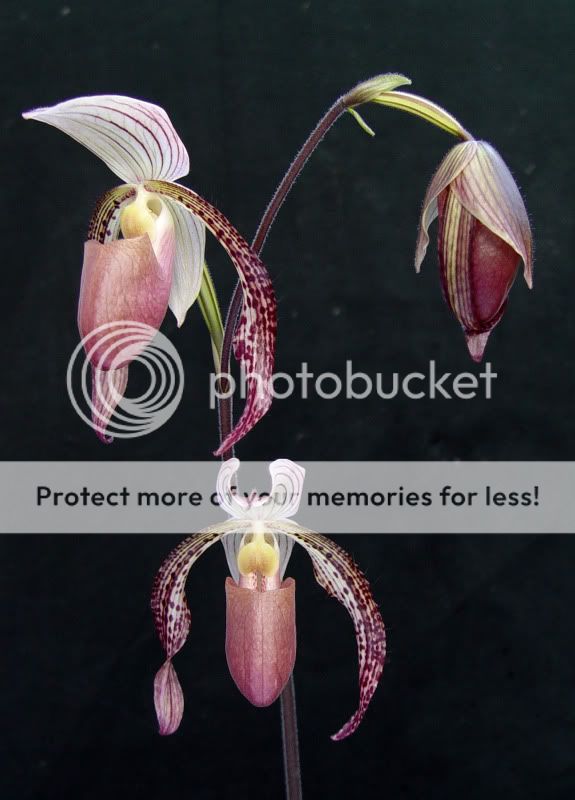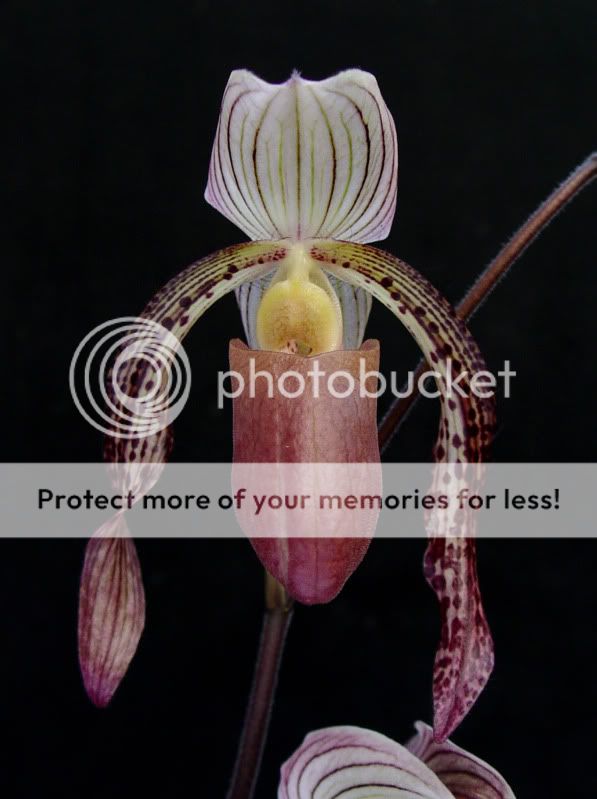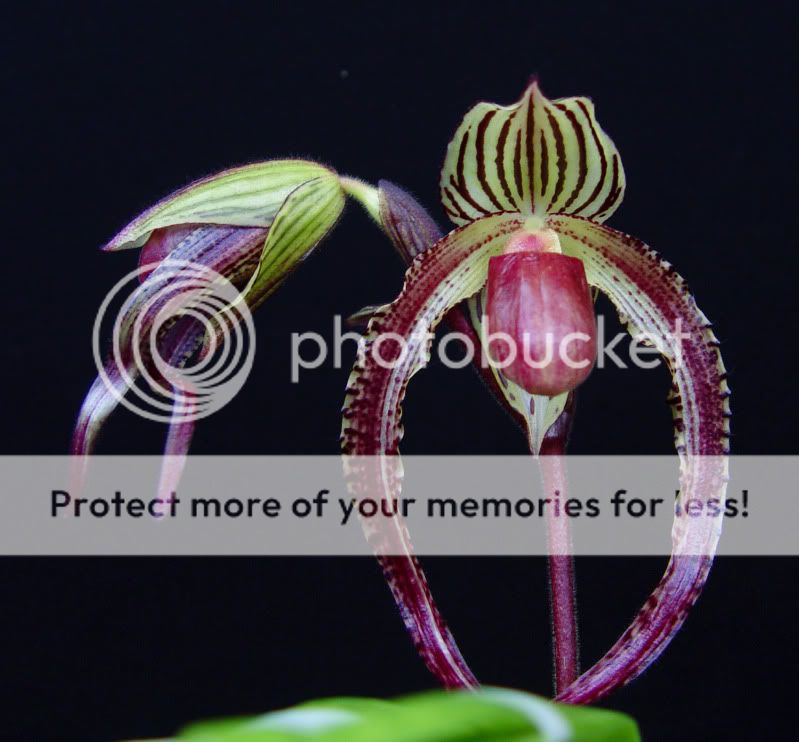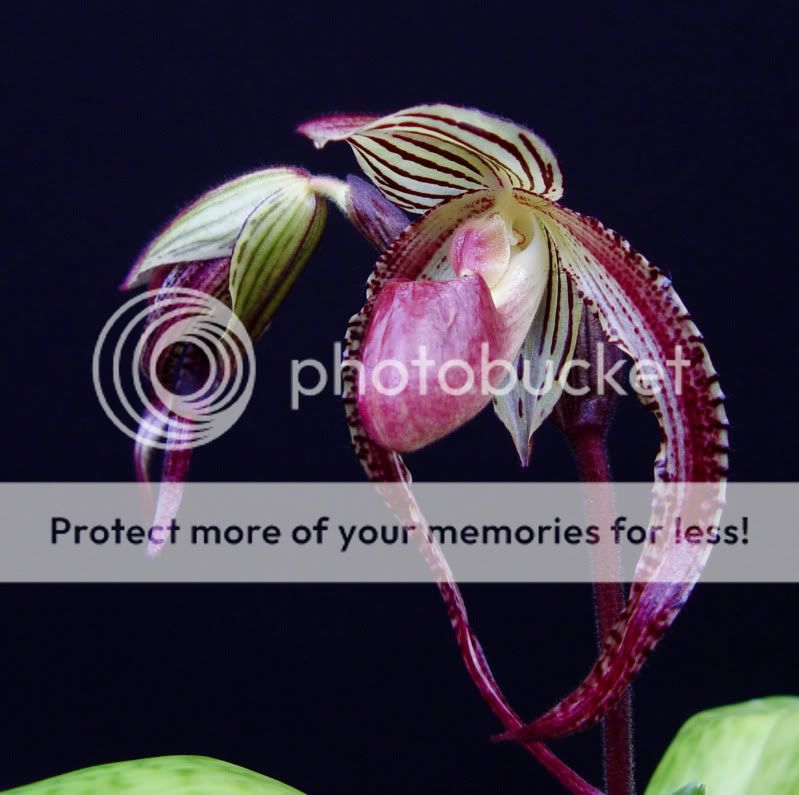D
Drorchid
Guest
.....at least it's genes do....
For those of you who have not heard of Paph stonei var platytaenium, it is considered a stable peloric form of Paph. stonei, with extra wide petals. Only one plant was ever discovered that had this trait, and unfortunately this plant is not in existence anymore.
To see pics of this plant see:
http://www.kew.org/exhibitions/johnday/images/large/jds_23_063.jpg
Luckily, there is still one hybrid in existence that was made with Paph. stonei var. platytaenium: Paph. Morganiae (stonei x superbiens). The one clone 'Bufordense' is still around in many collections:


Now I crossed Paph. Morganiae 'Bufordense' onto one of our Paph. sanderianum's. I was hoping that the petals would get longer, but still be wide, and keep the color of the Morganiae parent.
Finally the first seedling opened up, and it was exactly was I was hoping for. Interestingly you can still see the stonei var. platytaenium influence with the wide petals coming through into this hybrid:


Robert
For those of you who have not heard of Paph stonei var platytaenium, it is considered a stable peloric form of Paph. stonei, with extra wide petals. Only one plant was ever discovered that had this trait, and unfortunately this plant is not in existence anymore.
To see pics of this plant see:
http://www.kew.org/exhibitions/johnday/images/large/jds_23_063.jpg
Luckily, there is still one hybrid in existence that was made with Paph. stonei var. platytaenium: Paph. Morganiae (stonei x superbiens). The one clone 'Bufordense' is still around in many collections:


Now I crossed Paph. Morganiae 'Bufordense' onto one of our Paph. sanderianum's. I was hoping that the petals would get longer, but still be wide, and keep the color of the Morganiae parent.
Finally the first seedling opened up, and it was exactly was I was hoping for. Interestingly you can still see the stonei var. platytaenium influence with the wide petals coming through into this hybrid:


Robert
Last edited by a moderator:




































